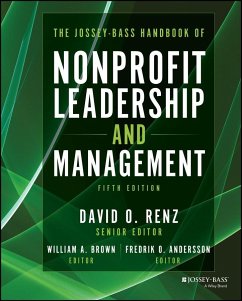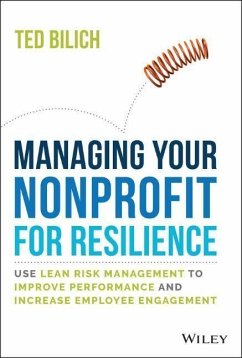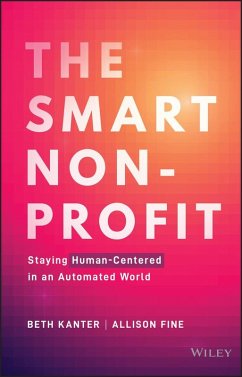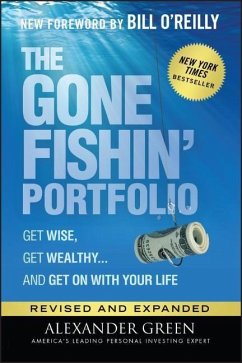
Modern Portfolio Theory and Investment Analysis
Versandkostenfrei!
Versandfertig in über 4 Wochen
Weitere Ausgaben:

PAYBACK Punkte
119 °P sammeln!




An excellent resource for investors, Modern Portfolio Theory and Investment Analysis, 9th Edition examines the characteristics and analysis of individual securities as well as the theory and practice of optimally combining securities into portfolios.
EDWIN J. ELTON is Nomura Professor of Finance at the Stern School of Business of New York University. He has authored or coauthored eight books and more than 100 articles. These articles have appeared in journals such as The Journal of Finance, The Review of Financial Studies, Review of Economics and Statistics, Management Science, Journal of Financial Economics, Journal of Business, Oxford Economic Papers, and Journal of Financial and Quantitative Analysis. He has been coeditor of the Journal of Finance. Professor Elton has been a member of the Board of Directors of the American Finance Association and an Associate Editor of Management Science. He is Associate Editor of Journal of Banking and Finance and Journal of Accounting Auditing and Finance. Professor Elton has served as a consultant for many major financial institutions. A compendium of articles by Professor Elton and Professor Gruber has recently been published in two volumes by MIT press. Professor Elton is a past president of the American Finance Association, a fellow of that association, and a recipient of distinguished research award by the Eastern Finance Association. MARTIN J. GRUBER is Nomura Professor of Finance and past Chairman of the Finance Department at the Stern School of Business of New York University. He is a fellow of the American Finance Association. He has published nine books and more than 100 journal articles in journals such as The Journal of Finance, The Review of Financial Studies, Review of Economics and Statistics, Journal of Financial Economics, Journal of Business, Management Science, Journal of Financial and Quantitative Analysis, Operations Research, Oxford Economic Papers, and The Journal of Portfolio Management. He has been coeditor of the Journal of Finance. He has been President of the American Finance Association, a Director of the European Finance Association, a Director of the American Finance Association, and a Director of both the Computer Applications Committee and the Investment Technology Symposium of the New York Society of Security Analysts. He was formerly Finance Department Editor for Management Science. Professor Gruber has consulted in the areas of Investment Analysis and Portfolio Management with many major financial institutions. He is currently a director of DWS Mutual Funds, and a Director of the Diawa closed-end funds. He is formerly a director of TIAA, a director and chairman of CREF, and a director of the S. G. Cowen Mutual Funds. STEPHEN J. BROWN is David S. Loeb Professor of Finance and Coordinator of Undergraduate Finance at the Leonard N. Stern School of Business, New York University. He has served on the Board of Directors of the American Finance Association, was founding editor of The Review of Financial Studies and is currently a member of the Board of the Society of Quantitative Analysis. He is a Managing Editor of the Journal of Financial and Quantitative Analysis and has served on the editorial boards of The Journal of Finance, Pacific-Basin Finance Journal, and other journals. He has published numerous articles and four books on finance and economics related areas. In 1996 he served on the nominating committee for the Bank of Sweden Prize in Economic Sciences in Memory of Alfred Nobel. He has served as an expert witness for the U.S. Department of Justice. WILLIAM N. GOETZMANN is Edwin J. Beinecke Professor of Finance and Management Studies at the Yale School of Management and Director, International Center for Finance at the Yale School of Management and has served on the Board of Directors of the American Finance Association. His published research topics include global investing, forecasting stock markets, selecting mutual fund managers, housing as investment, and the risk and return of art. Professor Goetzmann has a background in arts and media management. As a documentary filmmaker, he has written and coproduced programs for Nova and the American Masters series, including a profile of the artist Thomas Eakins. A former director of Denver's Museum of Western Art, Professor Goetzmann coauthored the award winning book, The West of the Imagination.
Produktdetails
- Verlag: John Wiley & Sons Inc
- 9th Edition
- Seitenzahl: 752
- Erscheinungstermin: 9. Dezember 2013
- Englisch
- Abmessung: 254mm x 179mm x 27mm
- Gewicht: 1080g
- ISBN-13: 9781118469941
- ISBN-10: 1118469941
- Artikelnr.: 37725605
Herstellerkennzeichnung
Libri GmbH
Europaallee 1
36244 Bad Hersfeld
gpsr@libri.de
Für dieses Produkt wurde noch keine Bewertung abgegeben. Wir würden uns sehr freuen, wenn du die erste Bewertung schreibst!
Eine Bewertung schreiben
Eine Bewertung schreiben
Andere Kunden interessierten sich für











